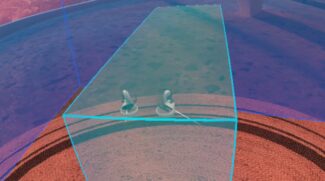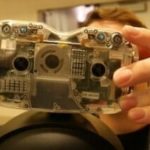Meta’s Andrew Bosworth explained why Quest headsets don’t yet have automatic room setup.
A new experimental feature appeared on some Quest 2 headsets this week enabling owners to manually mark out areas and objects in their home for a new class of mixed reality experience that’s responsive to the physical environment.
The feature leads to the obvious question: “Why isn’t VR play space setup fully automatic?”
Virtual Desktop creator Guy Godin asked that question on Twitter this week, asking “why do users have to outline doors, walls and furniture manually? The Quest has cameras (although low quality ones), in theory it should be able to do all this automatically through image recognition. Am I missing something?”
On Wednesday, Meta CTO Andrew Bosworth responded, writing “Segmentation is getting better all the time but still has error. The risk of getting it wrong is a concern as it relates to how people can safely navigate a physical space.”
Starting in 2019, Oculus Quest (and now Meta Quest 2) enabled players to use their controllers like laser pointers to outline a safe space on the floor that’s clear to move around inside. The company improved its systems over the last couple years, moving to support hand tracking-only setups and the ability to save the location of a couch or desk. Late last year, Meta also added a “Space Sense” feature to alert people in VR if something enters their play space.
This week when I tested the new experimental room setup feature I walked into a physical table while immersed in VR because I had forgotten to mark it out. The collision occurred within the first few minutes of testing the feature, suggesting Quest 2 owners will need to take great care if they use it. Meta plans to launch an experience called The World Beyond on Quest 2 as a demonstration of what developers can build with mixed reality. It should launch with the release of v40 of Meta’s Oculus software development tools but, as of this writing, the latest SDK version is still v39.





